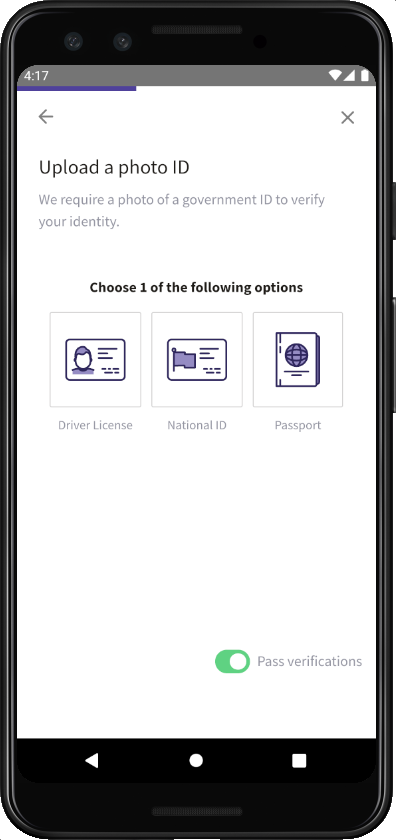Quickstart: Android WebView
Native SDKs Recommended
We strongly recommend using our native mobile SDKs (Android, iOS) instead of WebView where possible. WebView integrations are more difficult to support due to performance constraints of WebView technology
For more information, see Native mobile integration vs. WebView.
Below are some code snippets to get you integrating with the WebView API as soon as possible.

Demo App
If you just want to kick the tires on the WebView, we have an open source example app available at persona-id/persona-android-webview that you can clone and open in Android Studio.
Example Code
To launch the WebView, create a WebView and pass in query parameters specified in WebView Flow.
Handling Permissions
Be sure to add the required permissions for your use case to your AndroidManifest file. For example:
See https://github.com/persona-id/persona-android-webview/blob/main/app/src/main/AndroidManifest.xml in our sample app.
In addition to adding to the Manifest file, you’ll need to override onPermissionRequest and onShowFileChooser depending on your use case. See an example below.
Handling the callback redirect
On a successful or canceled inquiry flow, Persona will redirect to the redirectUri specified on when launching the flow, or “personacallback” if no custom redirectUri is specified. You can retrieve the query parameters specified in Redirecting On Complete or Cancel on the redirectUri.

